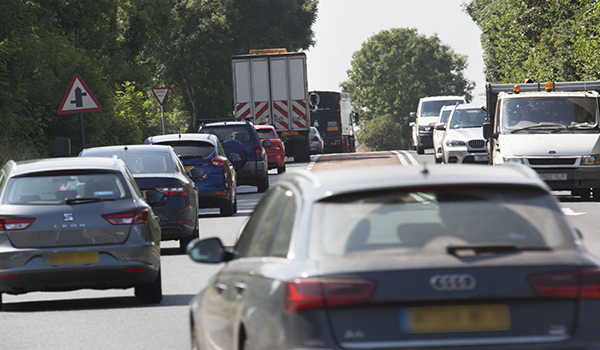- Welcome
- Scheme benefits
- The scheme in detail
- Protecting the environment
- Roadworks and diversions
- Scheme programme
- Connecting our customers
- Work with us
- Children's corner
- Fast facts for teachers
- Bridge building activity
- What did the Romans do for the A303?
- Wildlife fast facts
- Wildlife habitats and matching activity
- Word search
- Are we there yet?
- Are you a star spotter?
- Keeping in touch
- Customer survey
- Video introduction & flythrough
Fast facts for teachers
The area
- The A303 Sparkford to Ilchester scheme is located within what is known as the Yeovil Scarplands. This rural landscape has a series of ridges and steep slopes, known as scarps, separating sheltered valleys. Less than 5% of the area is urban, though Yeovil, lying in the south, has grown to become a large town.
- The area has a long history of settlement reflected through the archaeology, from Neolithic hill forts, Roman villas, to medieval open fields along with many listed buildings which are registered with Historic England. The area is known for its collection of old manor houses and parklands.
- Two miles away from Sparkford, Cadbury Castle, formerly known as Camalet, is a Bronze and Iron Age hillfort in the parish of South Cadbury. It is a scheduled monument which means it is recognised as being of national historic interest and has been associated with King Arthur's legendary court at Camelot.
- The scheme borders scheduled monuments at Camel Hill and Downhead. At Camel Hill there are remains of a Romano-British settlement. This is of late 2nd to 4th century AD origin and is thought to be alongside the route taken by a major Roman road leading into Ilchester. At Downhead Manor Farm scheduled monument there is evidence of a medieval settlement. Both these monuments will be protected from the scheme by a buffer zone and fencing.
- Sparkford is home to the famous Haynes publishing company and International Motor Museum.
- The Royal Naval Air Station at Yeovilton is one of the busiest military airbases in the UK with 4300 personnel and covering 1400 acres. It is also home to the Fleet Air Arm museum and hosts an annual air show.
- The A303 is a very famous road and has featured in many aspects of popular culture including film, song and children’s cartoons.
The project
- The A303 links the South West to London and the South East - it is a useful road for people travelling for holiday, business and locally.
- We’re building 3.5 miles (5.6km) of new road that has two lanes for cars and lorries.
- The new road will reduce the number of traffic jams and serious accidents.
- Over 1200 people told us what they thought of our project at our public consultation in 2017, 82% of people agreed that something needed to be done to improve the road.
- The project will cost about £130million to £160million to build.
- On an average day the road carries around 23,500 vehicles, but numbers increase greatly in the summer.
- We’re improving the paths alongside the A303 so that it can be enjoyed by walkers, cyclists and horse-riders. We’re building bridges at Steart Hill and Hazlegrove so the road can be crossed safely.
- We’ll create new and better habitats for animals. We’ll do this by planting 10 km (6 miles) of hedges, and 23 hectares, which is equivalent to 33 football pitches of trees and sowing 30 hectares, or 43 football pitches of grass.
- We’ll be installing around 100 bird boxes and over 200 bat boxes.











